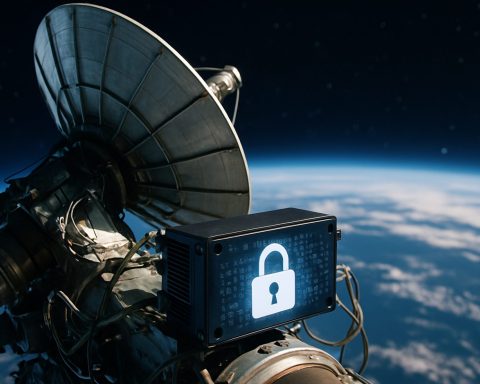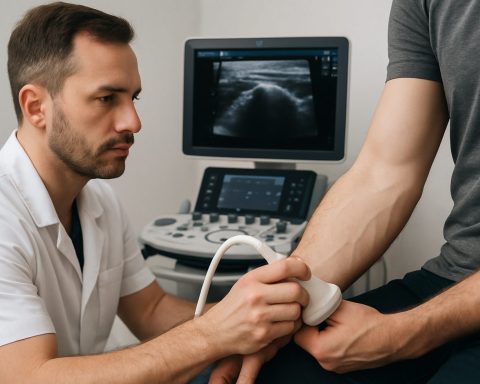- The Future Combat Air System (FCAS) reflects Europe’s goal for strategic defense autonomy amid internal disputes.
- Éric Trappier, CEO of Dassault Aviation, highlights challenges in collaboration with Airbus and project partners.
- Dassault leads the New Generation Fighter (NGF) project; friction over workload distribution affects progress.
- Trappier criticizes the “geo return” concept, emphasizing the need for true European collaboration over job shares.
- The project’s success is threatened by historical divisions reminiscent of past Eurofighter consortium splits.
- FCAS presents geopolitical implications, balancing national pride and European unity in defense strategy.
- Despite challenges, Airbus remains optimistic, with efforts to prioritize and advance the project continuing.
- FCAS represents a turning point for Europe’s defense future, questioning the extent of sovereignty shared with allies.
Against the picturesque backdrop of Paris, a storm brews over Europe’s ambitious defense project—the Future Combat Air System (FCAS). The project, an endeavor mirroring the continent’s desire for strategic autonomy, finds itself in the crosshairs of fierce debates and territorial disputes. At its core stands Dassault Aviation’s CEO, Éric Trappier, who recently voiced his frustrations in front of French lawmakers, unraveling the complex dynamics at play.
Trappier’s stance is nothing short of candid. As he weaves through the intricate dance of collaboration between Dassault and Airbus, he paints a vivid picture of a project marred by internal discord. The FCAS, an ambitious vision shared by France, Germany, and Spain, aims to construct a sixth-generation fighter jet by 2045—a chariot of the future designed to uphold Europe’s defense sovereignty.
While Dassault has been tasked as the prime contractor for the New Generation Fighter (NGF) at the heart of the system, the road has not been smooth. The 3.2 billion euro contract for Phase 1B, which broke ground in December 2022, has highlighted the difficulties of sharing the stage with partners. Trappier’s voice echoed through the halls of the French National Assembly, indicating that despite various agreements, ongoing wrangles over workload distribution cast long shadows over the project’s timeline. “It is a permanent negotiation,” he asserts, emphasizing a persistent need for compromise—a scenario distinctly different from the rapid success of Dassault’s French-led nEUROn drone.
Imagining the future fighter is no longer an abstract exercise. Technical papers define its shape and functionality, and there’s a palpable urge to transition from blueprint to reality. Yet, the weight of decision-making is disproportionate. Dassault, representing France, finds itself outvoted by Airbus allies Germany and Spain. As Trappier argues for meritocracy in task allocation, the ghost of historical grievances looms large—reminiscent of the divide that propelled France to develop the Rafale independently after pulling out of the Eurofighter consortium. This historical context is a sobering reminder of the fractures that can exist when cooperation is not perfectly harmonized.
For Trappier, the real crux of the issue isn’t merely about job shares but rather a philosophical stance on defense interdependence. The notion of “geo return” haunts the project’s progress, a concept he derides as detrimental to genuine European collaboration. It underscores a broader tension: the perpetual tango between national pride and collective European unity. As technology exchanges become fraught with conditions, it forces leaders to reckon with a deeper question—how much sovereignty and strategic independence can be sacrificed at the altar of cooperation?
The implications extend beyond the aerospace landscape into geopolitical realms, especially amidst shifting global power structures. For Trappier and his counterparts, navigating this delicate balance requires more than engineering prowess; it demands diplomatic finesse and visionary leadership.
The FCAS represents a potential watershed moment for Europe. Despite the turbulence, some gleaming prospects emerge. Airbus, for its part, maintains a tone of optimism, emphasizing strong progress and steadfast commitment to the project. Even as agreements waver, efforts to streamline and prioritize continue to push FCAS forward, aspiring to cement its place as the backbone of European defense.
As Europe gazes towards the sky, the clouds of uncertainty may not yet part, but the vision for a unified, autonomous defense capability remains alive. Europe stands at a crossroads, echoing Trappier’s poignant question: “What will we give up to our allies?” The answer may well shape the continent’s collective defense destiny.
Future Combat Air System (FCAS): Europe’s Aerospace Dream or an Ambitious Mirage?
Overview
The Future Combat Air System (FCAS) is a flagship project symbolizing Europe’s march towards defense autonomy. At its heart is the construction of a sixth-generation fighter jet, poised to stand as a testament to cooperative innovation between France, Germany, and Spain. Nevertheless, the pursuit of this landmark project finds itself enmeshed in complexity, national pride, and cooperative challenges.
Project Overview and Key Players
The FCAS is an ambitious effort spearheaded by Dassault Aviation of France and Airbus, representing Germany and Spain. Expected to culminate by 2045, the project is pegged at becoming the cornerstone of European aerospace defense. The undertaking highlights significant investment in research, development, and eventual production, with existing contracts like the Phase 1B worth 3.2 billion euros already underway.
Key Players:
– Dassault Aviation: Prime contractor and innovator in aerospace technologies.
– Airbus: European aerospace juggernaut, contributing significant engineering and development expertise.
Reasons Behind Internal Discord
While the FCAS vision aligns theoretically among stakeholders, it encounters discord on several fronts:
1. Workload Distribution: Unequal sharing of responsibilities creates friction. Dassault’s CEO Éric Trappier points out meritocracy issues, as decision-making weight is skewed toward Airbus allies, Germany and Spain.
2. Historical Grievances: These resonate from the independent development of the Rafale by France, post its exit from the Eurofighter consortium, indicating the fragile nature of defense collaborations.
3. Geo Return Concept: Undermines genuine cooperation, as it erects “economic sovereignty” barriers that overshadow collaborative ethos.
Challenges and Controversies
– Technical Integration: Major technological hurdles exist in harmonizing varied national defense standards into a unified fighter system.
– Political Dynamics: National interest often conflicts with broader European goals, requiring diplomatic negotiations to balance priorities effectively.
– Strategic Autonomy vs. Interdependence: The EU’s desire for strategic sovereignty is hampered by internal dependencies and external political pressures, especially from NATO alignments.
Industry Trends and Market Forecasts
Here are some insights into the future of the aerospace defense sector in light of FCAS:
– Technological Convergences: Advances in AI, stealth, and autonomous systems are expected to drive innovation, with FCAS at the forefront of new defense technologies.
– Market Growth: The global military aircraft market is projected to grow, driven by modernization needs and geopolitical tensions. Europe, bolstered by FCAS ambitions, seeks to capture a larger share.
– Sustainability and Security Concerns: Increasing emphasis on environmentally sustainable jet fuel and cyber-secure avionics presents both challenges and opportunities for the FCAS.
Expert Insights and Recommendations
– Promote Transparent Dialogue: Continuous communication between partners should address grievances early, reinforcing alignment on project objectives.
– Adopt Flexible Structures: Implementing flexible project management and operational frameworks can accommodate the unique demands of multi-national collaboration.
– Balance Sovereignty and Collaboration: A strategic balance between national sovereignty and collective collaboration is essential, enhancing European defense without compromising individual national security interests.
Quick Tips for Successful Collaboration
– Establish Clear Governance Structures: Clear roles, responsibilities, and objectives can reduce friction and streamline decision-making.
– Prioritize Innovation: Encourage technological research that aligns with both national and collective European interests to drive forward the development ambitions of FCAS.
Conclusion
The FCAS is more than a defense initiative; it’s a mirror reflecting Europe’s unity aspirations amidst its diverse socio-political landscape. While internal discord poses challenges, with strategic foresight and diplomatic maneuvering, FCAS can still soar as the keystone of a unified European defense strategy.
For more information and resourceful guidance on European aerospace initiatives, visit the Dassault Aviation and Airbus websites.







